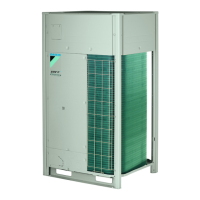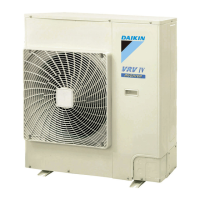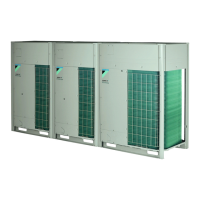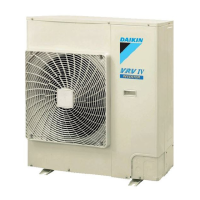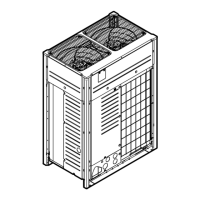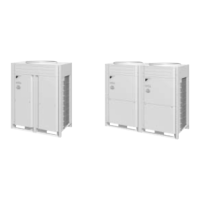20 | Configuration
Installer and user reference guide
126
REYQ8~20+REMQ5U7Y1B
VRV IV+ heat recovery
4P561154-1A – 2020.10
Example:
Checking the content of parameter [1‑10] (to know how many indoor units are
connected to the system).
[A‑B]=C in this case defined as: A=1; B=10; C=the value we want to know/monitor:
1 Make sure the 7‑segment display indication is in the default situation (normal
operation).
2 Push BS1 one time.
Result: Mode1 is accessed:
3 Push BS2 10 times.
Result: Mode1 setting 10 is addressed:
4 Push BS3 one time; the value which is returned (depending on the actual field
situation), is the amount of indoor units which are connected to the system.
Result: Mode 1 setting 10 is addressed and selected, return value is
monitored information
5 To quit mode 1, push BS1 one time.
20.2.6 To use mode 2
The master unit should be used to input field settings in mode2.
Mode2 is used to set field settings of the outdoor unit and system.
What How
Changing and accessing the
setting in mode2
Once mode2 is selected (push BS1 for more
than 5 seconds), you can select the wanted
setting. It is done by pushing BS2.
Accessing the selected setting's value is done by
pushing BS3 1 time.
To quit and return to the initial
status
Press BS1.
Changing the value of the
selected setting in mode2
▪ Once mode 2 is selected (push BS1 for more
than 5 seconds) you can select the wanted
setting. It is done by pushing BS2.
▪ Accessing the selected setting's value is done
by pushing BS3 1 time.
▪ Now BS2 is used to select the required value
of the selected setting.
▪ When the required value is selected, you can
define the change of value by pushing BS3 1
time.
▪ Press BS3 again to start operation according to
the chosen value.
Example:
Checking the content of parameter [2‑18] (to define the high static pressure setting
of the outdoor unit's fan).
[A‑B]=C in this case defined as: A=2; B=18; C=the value we want to know/change
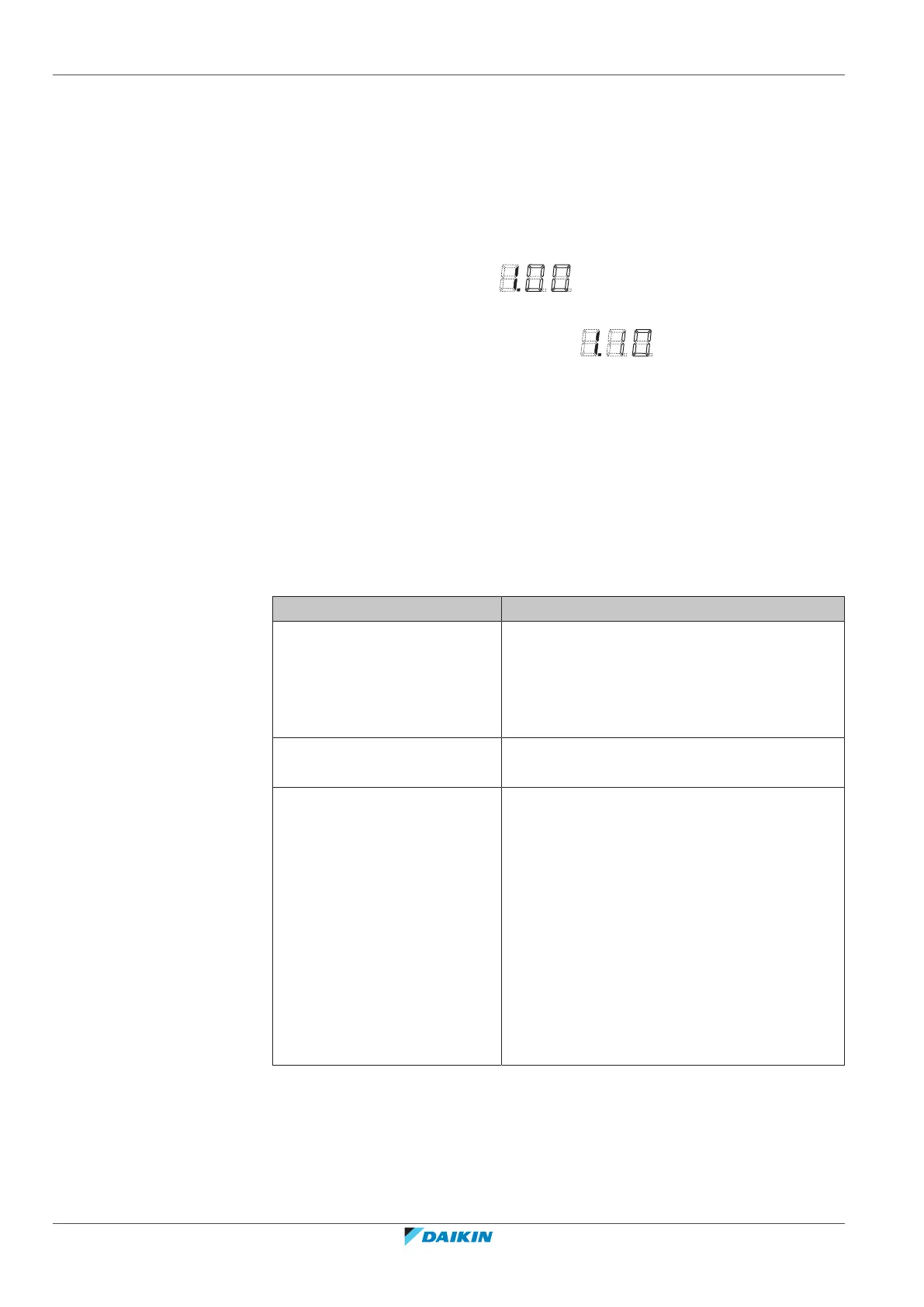